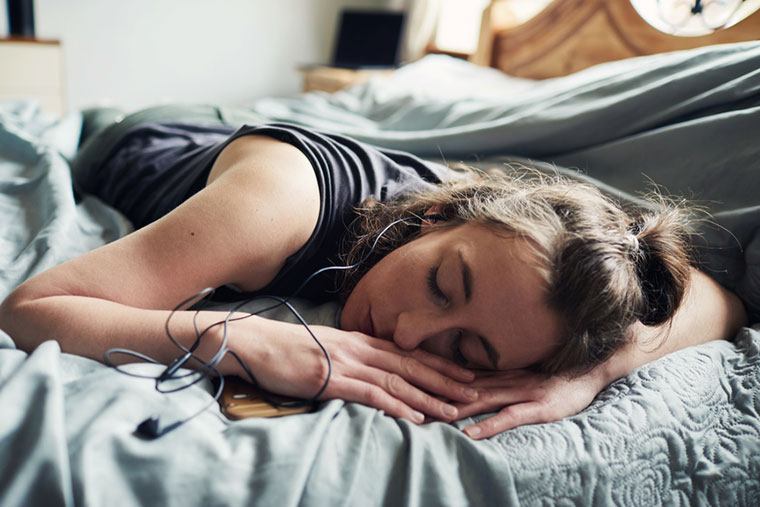It can start to feel like there aren't enough hours in the day to check off everything on your to-do list, let alone find a full eight hours to snuggle between your sheets at night. But burning the candle at both ends—you worked into the wee hours to meet that deadline and still made it to your sunrise bootcamp—can literally make you feel drunk at work. One possible solution? Penciling 15 minutes of nap time into your schedule.
"People, for the most part, are not sleeping enough at night, and because of that they are entering their day at a deficit," says Sara C. Mednick, psychologist and author of Take a Nap, Change Your Life. "One of the ways that napping helps is that it allows you to catch up on some desperately needed sleep. But there’s also a large research body that shows even in well-rested adults, naps are very helpful for increasing cognition, particularly memory."
"Even in well-rested adults, naps are very helpful for increasing cognition, particularly memory."
Mednick explains that certain information you take in during the day can only be processed while you sleep. So splitting your day into two parts by grabbing some afternoon winks can make you more productive on either side of your nap.
"Naps are modifiable and very adaptive," says Mednick, who is adamant that a quick mid-afternoon snooze won't mess with your nighttime zzz's. "If you're looking to have just a pick-me-up, a 15-minute nap at any time is going to do that service. If you’re looking to improve your cognitive processing a little more, you’ll want a longer nap." She suggests 45 to 90 minutes to help improve memory consolidation, creativity, and deeper thinking.
Clearly, caffeine can't do that. So instead of reaching for that third cup of cold brew when the 3 p.m. sump hits, why not treat yourself to a 15-minute shutdown?

{{post.sponsorText}}
Here are Mednick's tips for power napping like a pro.

Create a nap-time ritual
Unless you have an in-office hypnotist, it's unlikely you're going to be able to lay your head down on your desk and immediately conk out (even if you have one of those crazy-cool Ostrich Pillows). Instead, you need to find a way to tell your body that it's time to power down.
"We’re creatures of habit, so doing the same thing before you settle in each time is very helpful," says Mednick. Any chill-inducing act—whether it's putting in earplugs, turning off the lights, or pressing play on a meditation app—will help send a signal to your brain that it's time to transition to a more relaxed state.
Set the scene...
Your cubicle—or even a nap pod, if you're lucky enough to have one—may not be nearly as appealing as your cozy, cloud-like bed. But there are a few tweaks you can make to create a chill zone in your office. "Sleep is inhibited by light. So if you want to tell your body that it's time to take a break, you get into a very dark place," says Mednick.
She means this literally: Turn off the lights, lie down, and pop on an eye mask. You should also press pause on your emails (you can do it!) and silence your phone before you go to sleep. Even the most important messages can wait 15 minutes.
...and an alarm
Unless you have the luxury of sleeping all afternoon (in which case, I want your job), make sure you set some sort of alarm to pull you out of dreamland and back into the real world. "Make sure that you know that by a certain time you're going to be back up again," Mednick says. Even if you can't fall completely asleep in the time you've allotted, giving your mind a rest can greatly boost your productivity.
Go somewhere you feel safe
Most bosses aren't exactly on board with an on-the-clock snooze, so you'll need to relocate in order to catch some shut-eye. But, of course, you can't just curl up anywhere. "You have to be in a safe place," says Mednick. "When you're in full repose, you need to know you're not going to be bothered—or robbed." She's a big fan of the lunchtime car nap—as long as you remember to lock the doors.
Simply give yourself a break
If sleeping just isn't in the cards, Mednick says you should still take some time away from your computer. "We’re not able to work as constantly and as hard as people do without having some sort of decrease in performance," she says. "So in general, taking any form of break can be great." Take a walk, phone a friend, do something for you.
Gone are the days of sleep-shaming: In 2017, it's cool to get a full eight hours of sleep. Especially if you get to do it in really, really adorable pajamas.
Loading More Posts...